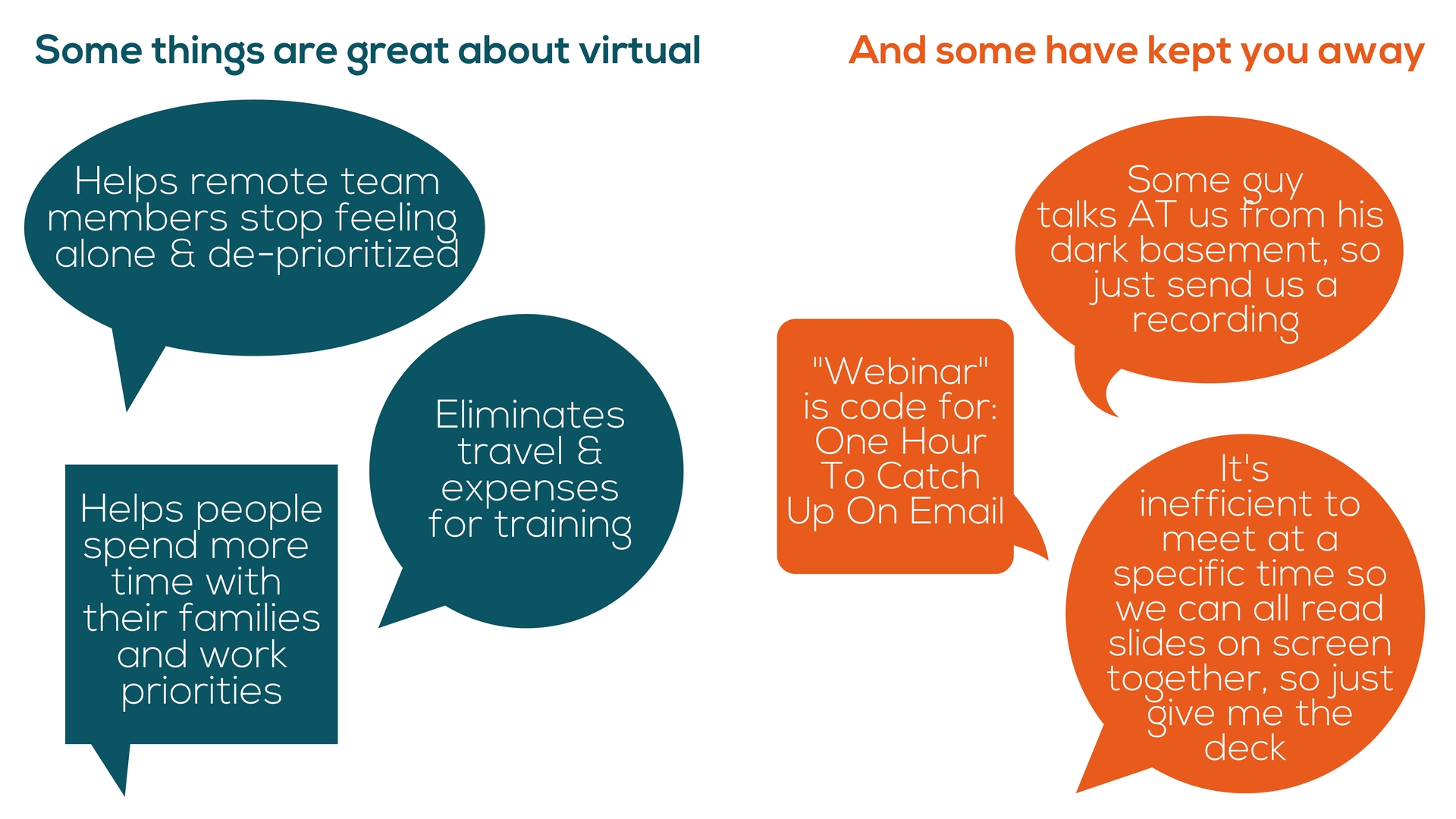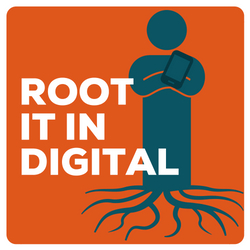So How Do You Create And Deliver Killer Virtual Training?
We regularly get asked how we approach virtual training, and how we make it a good investment. Most of our future customers are weighing the upside and downside of learning in a remote environment. They sound something like this:

The 5 Layers That Differentiate Our Approach
Here are the five things customers mention most often when they tell us what makes our virtual training different from their past "webinar" experiences. If you're skimming the list to get a taste of our style, click into each layer to see short video clips and screen shots.
 Layer #1: Set The Stage By Creating A Specific Environment
Layer #1: Set The Stage By Creating A Specific Environment
Your learners will experience a vibe that can (surprisingly) be richer than an in-person conversation. We know. It's bold to say that a virtual meeting can be deeper than an instructor led training. It's all about the feeling in the room. When the facilitator is warm, welcoming, and credible - and you combine that with the safety that people feel behind the keyboard - it creates a uniquely insightful and open atmosphere.
 Layer #2: Root It In "Digital" With Virtual-Native Design
Layer #2: Root It In "Digital" With Virtual-Native Design
This layer is about not retrofitting instructor led classes - and instead designing for the virtual environment from the beginning. From there, it's about giving each participant maximum (digital) impact. By using apps, polls, interactions, and annotations, they experience each session in an engaging way. You'll never catch us reading slides from a 6-hour in-person training class.
 Layer #3: Light Up The Chat Box
Layer #3: Light Up The Chat Box
This one is critical. The magic is in the style of the questions. Hint: it's often the opposite of in-person facilitation. Click through to see how our virtual events often have hundreds of lines of chat between the attendees. This is where virtual events create the potential for peer learning and sharing that can't happen in an in-person session. Because people can read faster than people can talk, attendees can absorb peer insights at an awesomely rapid rate.
Layer #4: Love The Lens (The Camera Lens, That Is)
It matters. You know this if you've attended a session where the facilitator appeared to be training from a dark dungeon. Often trainers don't want to be on camera because they feel awkward talking to a glass lens, or they don't have a studio to make it look good. Not here. We love the lens because we know the personal connection matters to our learners. When you click through you'll see nine nuances that matter when it comes to on-camera presence.
 Layer #5: Prepare A Gush Of Support
Layer #5: Prepare A Gush Of Support
This means going beyond the obvious idea of providing help when someone has a problem. For example, we have 2 team members on every virtual training: 1 facilitator and 1 technical producer. Imagine having 200 people on a session, where 3 people have a technology challenge. Without a dedicated producer, the other 197 people would have a sub-par experience at the session start because 5-10 minutes could be wasted on an issue that only 1% need help with.
